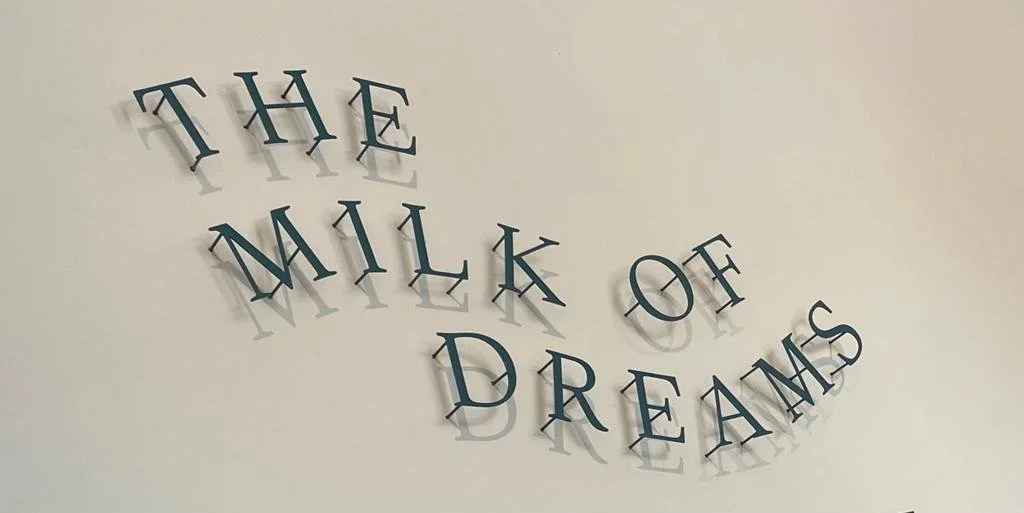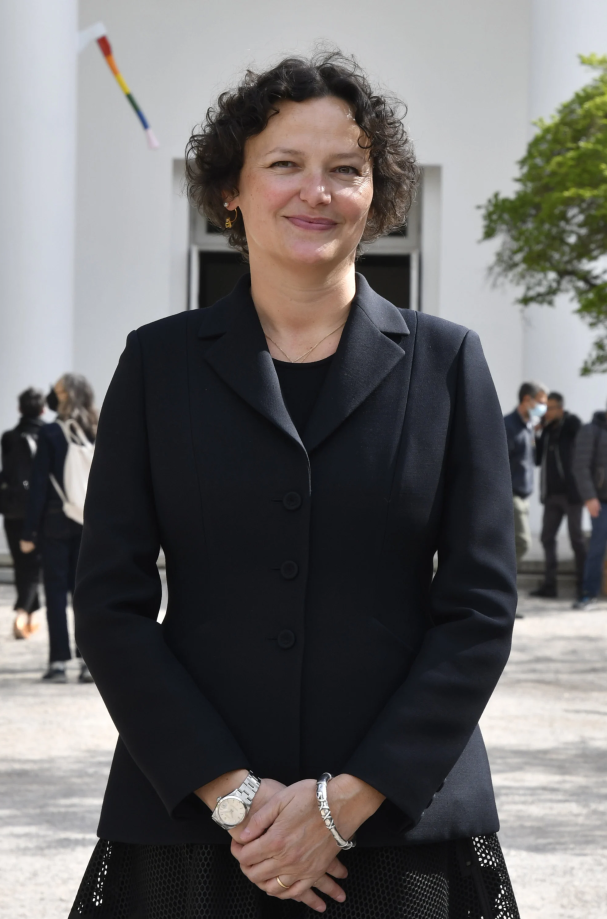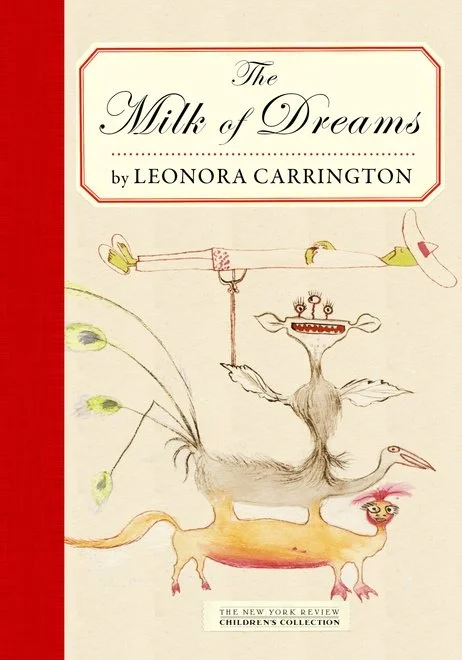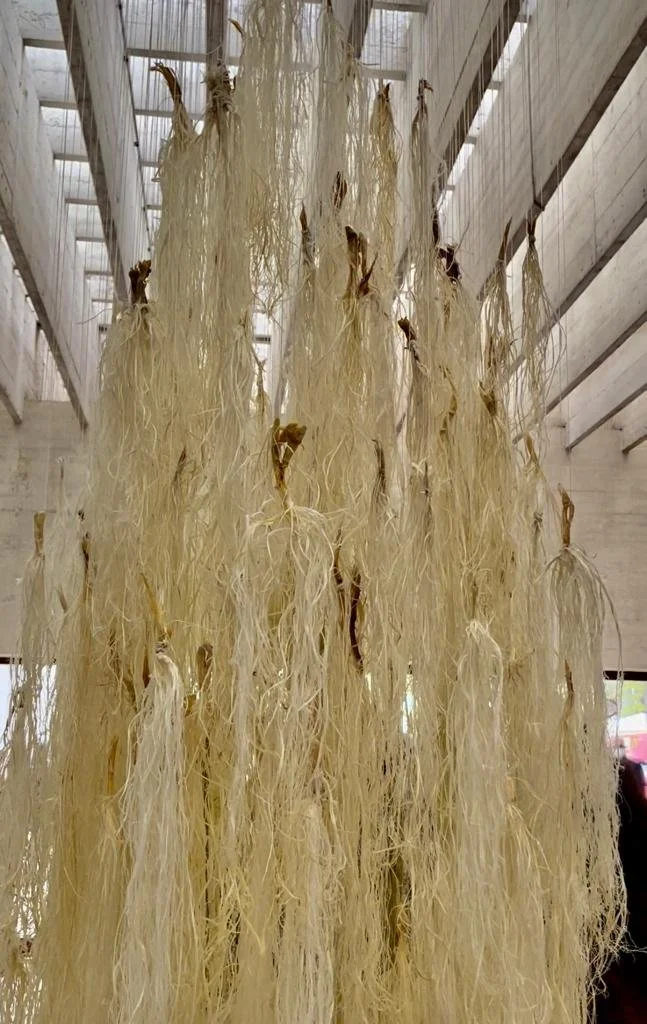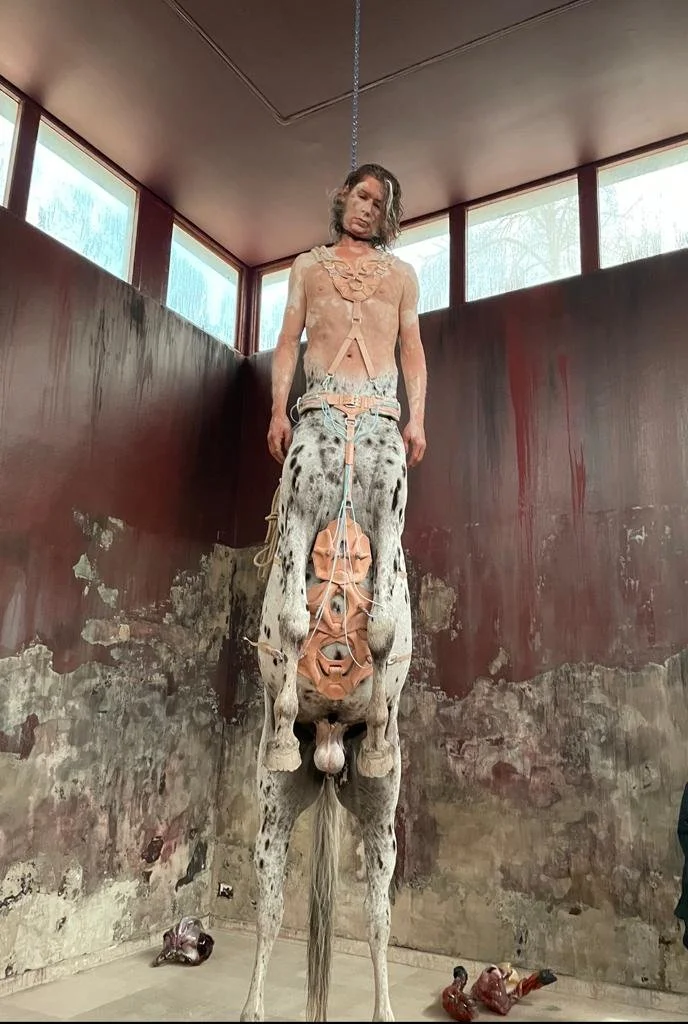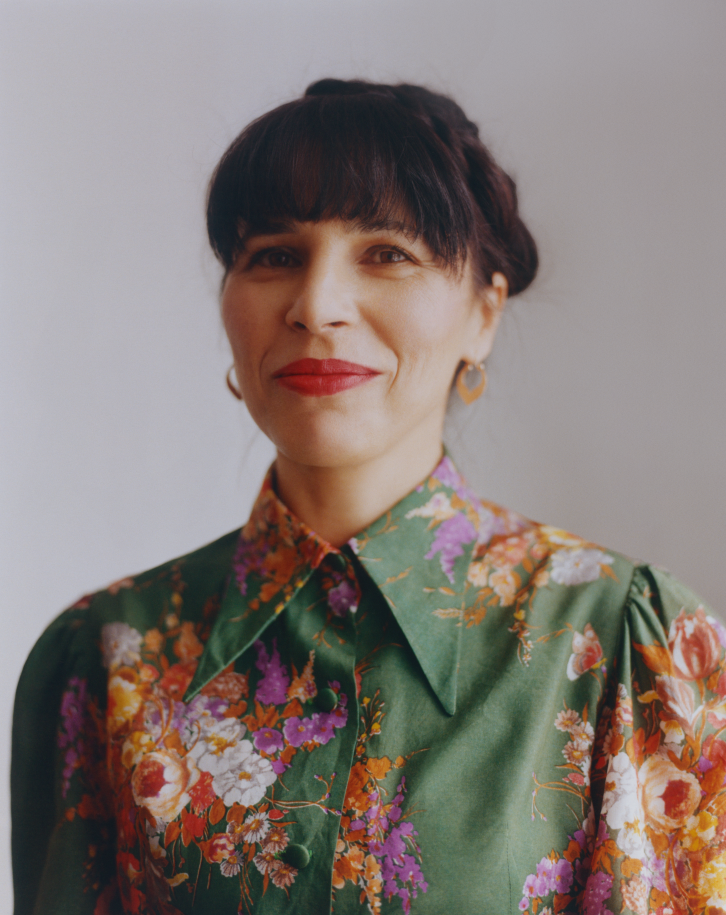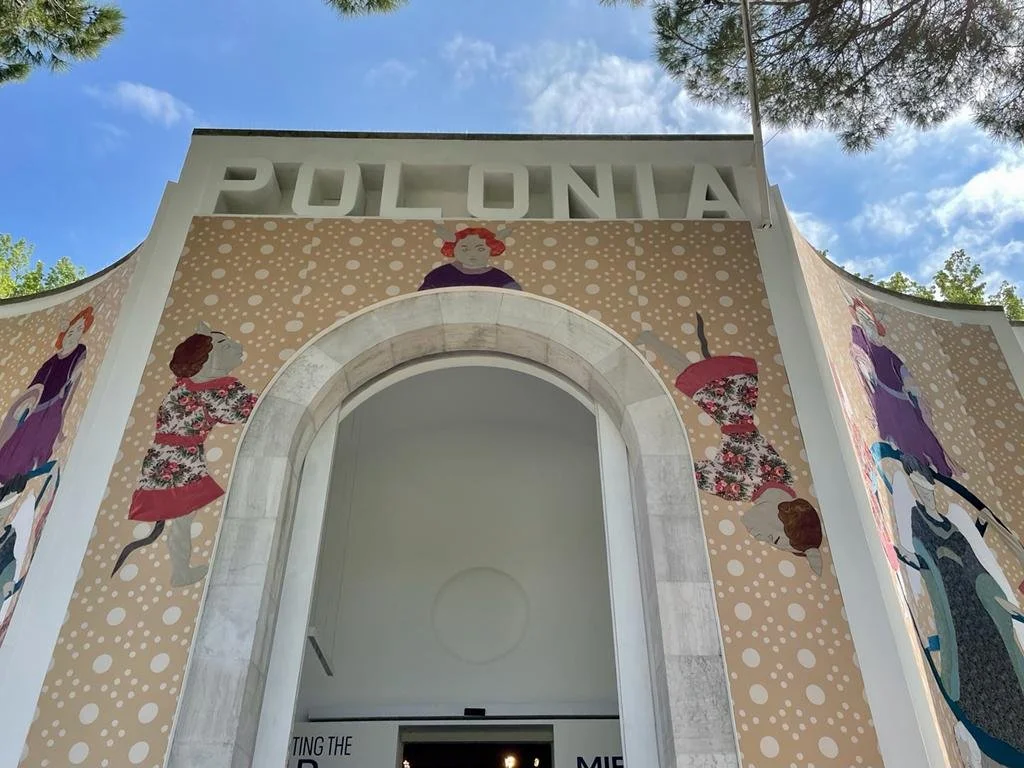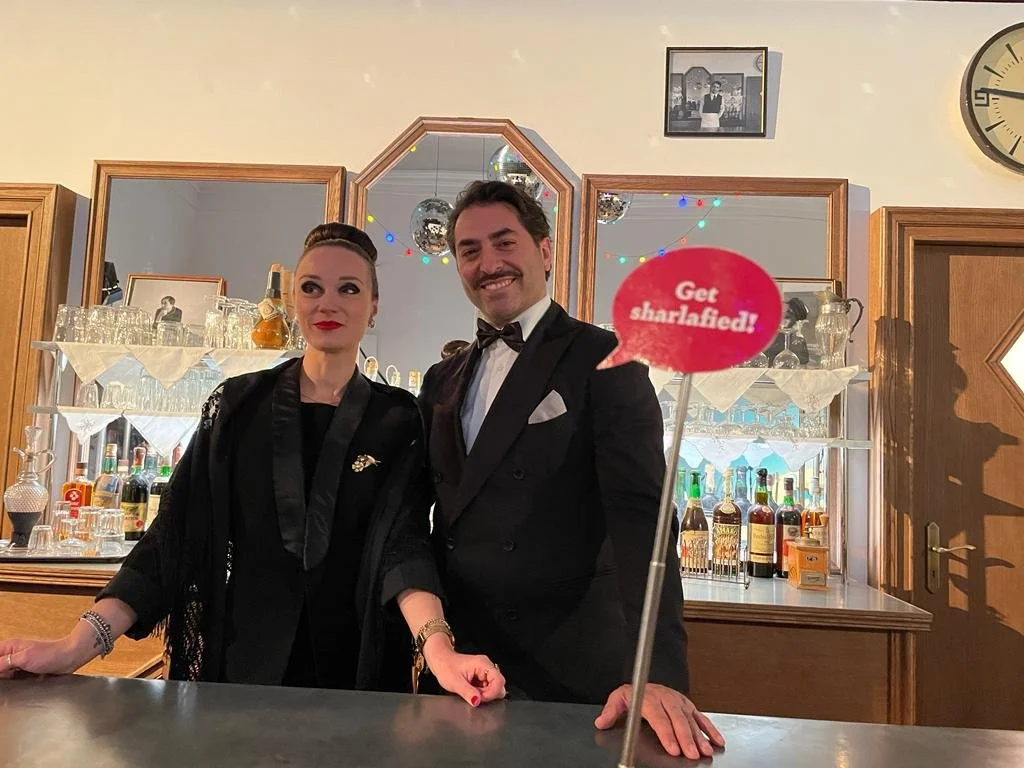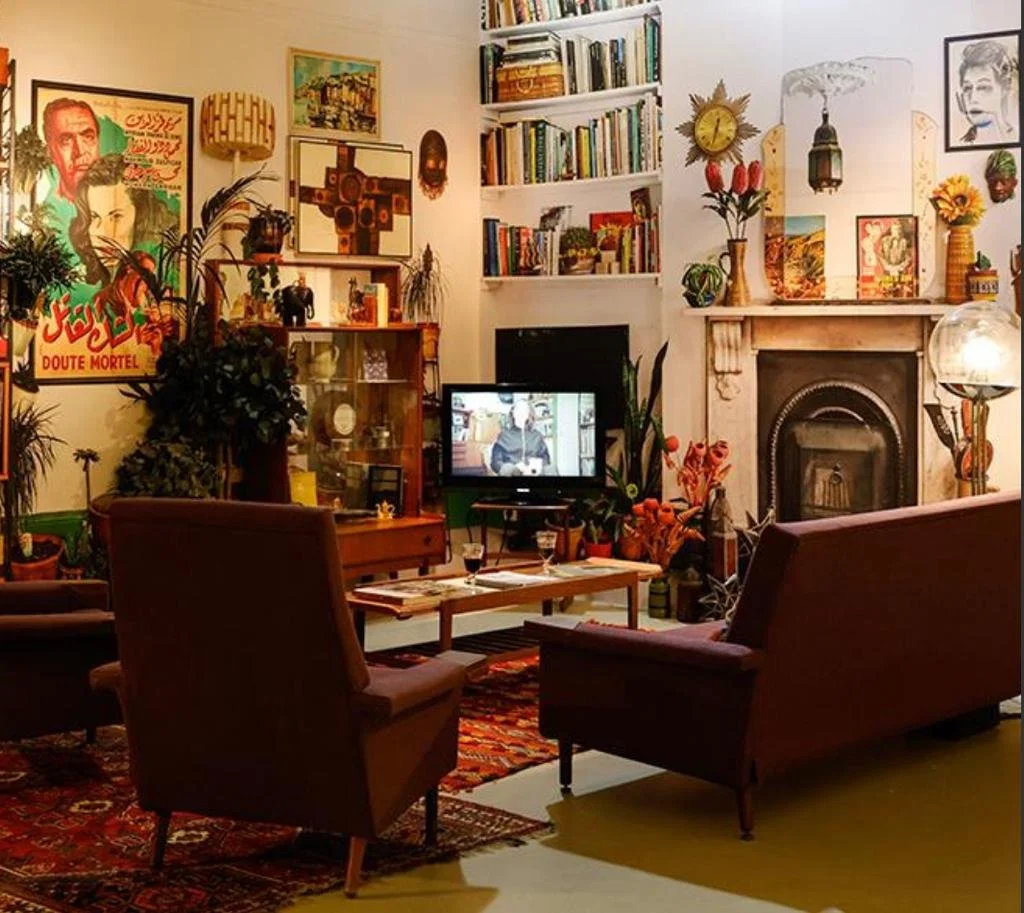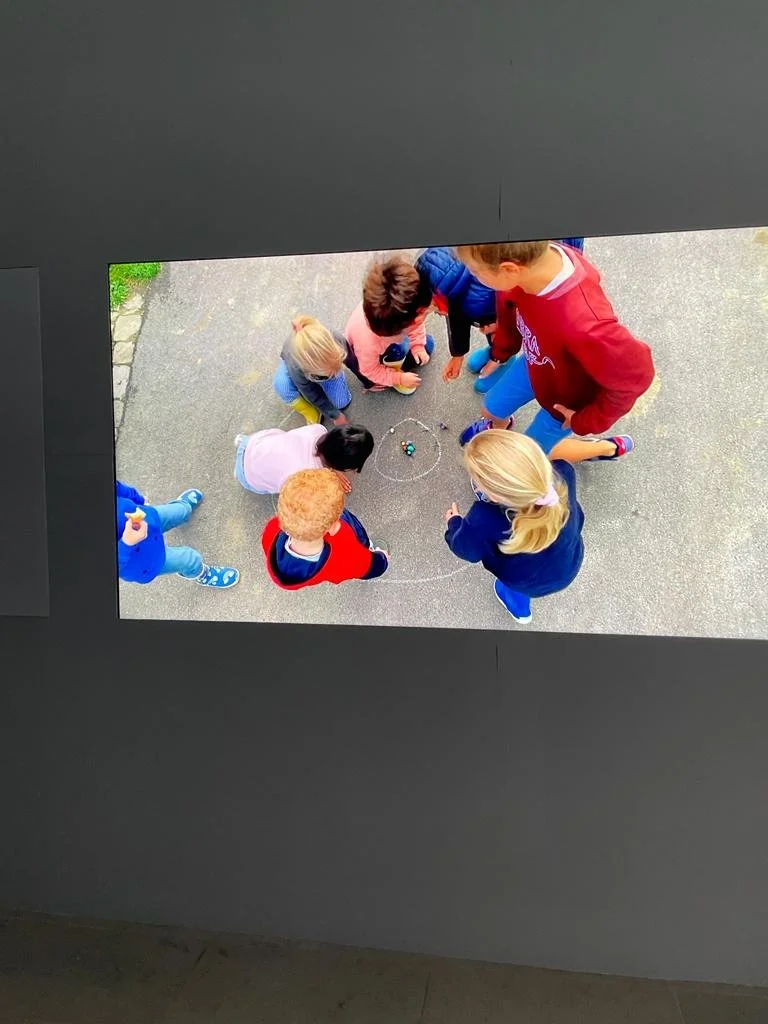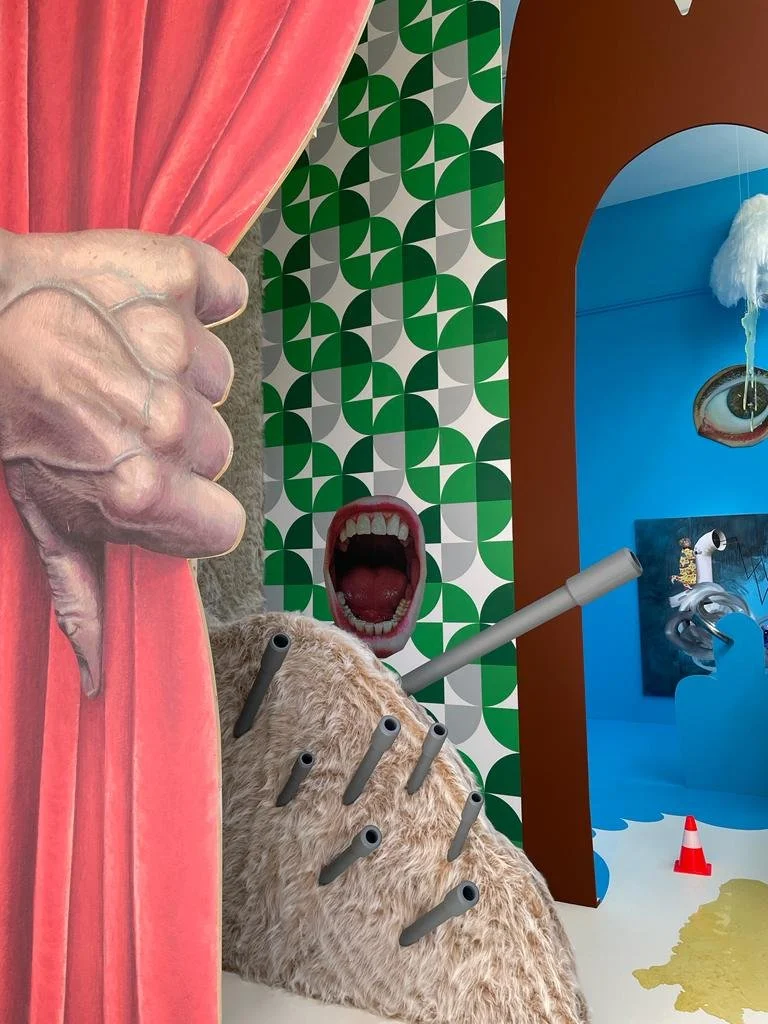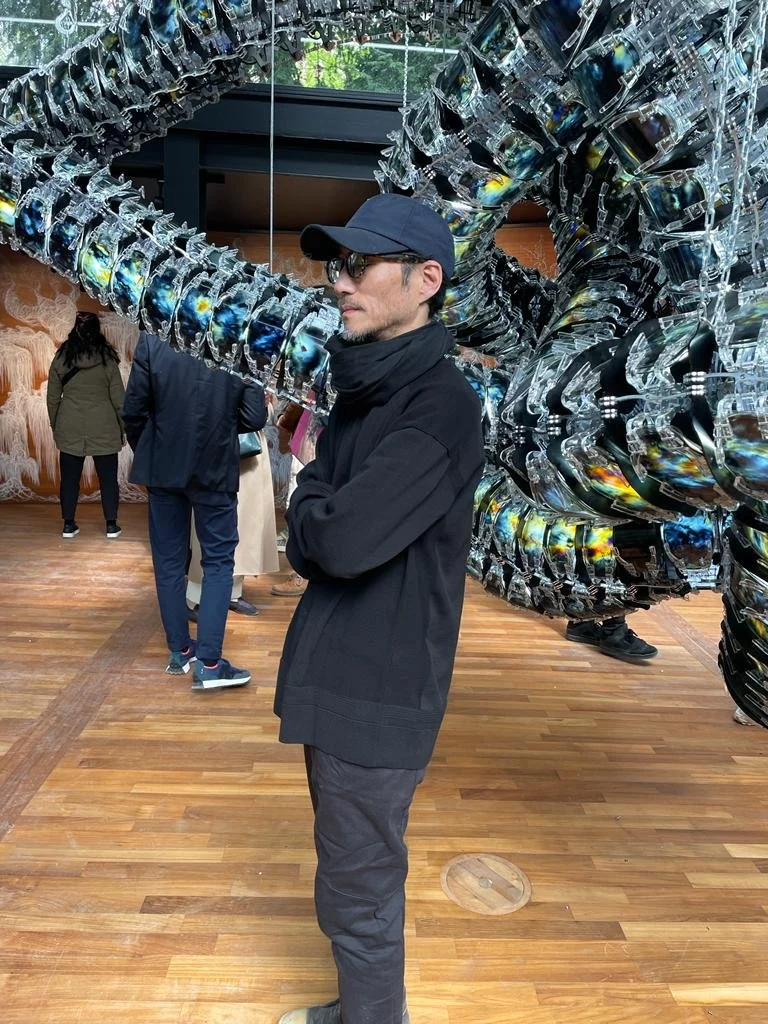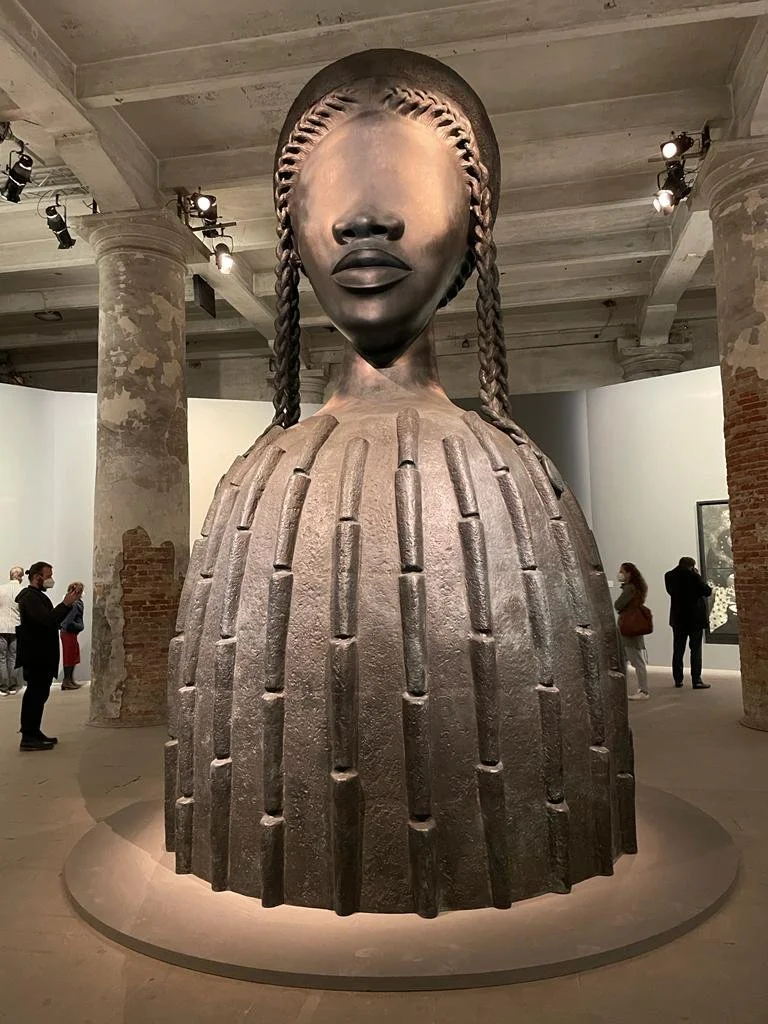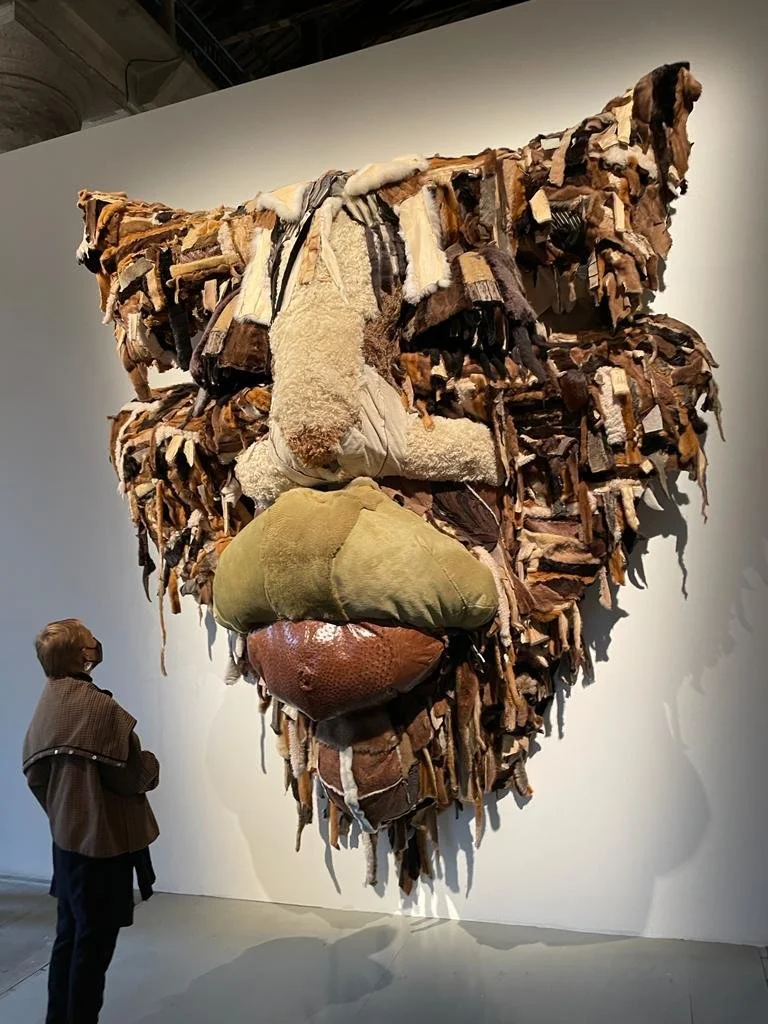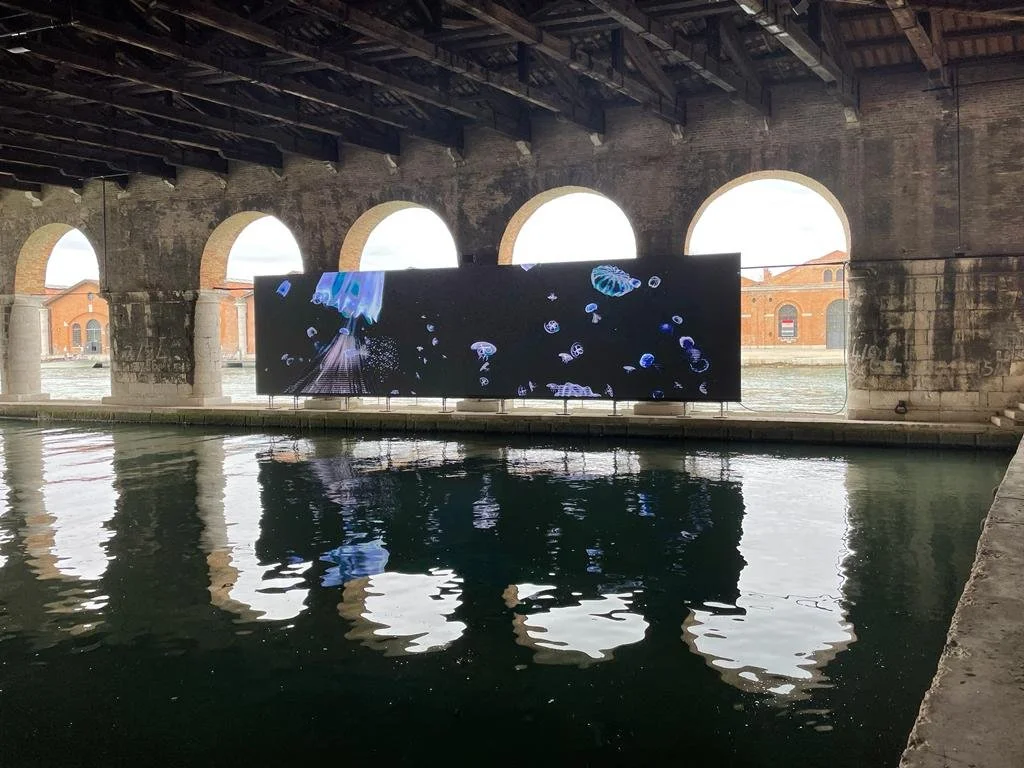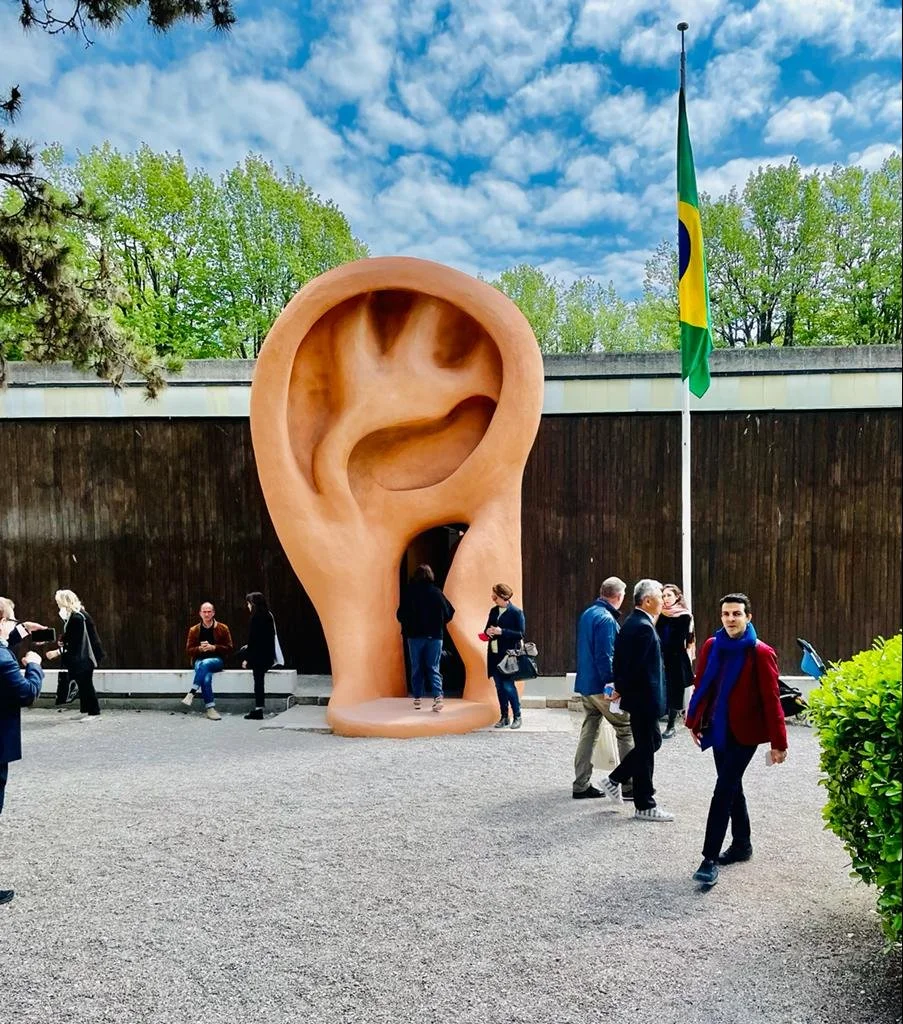The Milk of Dreams- My preview tour of the Biennale of Art in Venice
Sharlafied visits the Biennale preview on April 20 and 21 and gives her impressions on this avant-garde art exhibit held every two years in Venice.
I had the great privilege of visiting the preview of the Biennale of Art in Venice , taking place from 19 to 21 April. The title for this year’s edition is The Milk of Dreams.
For the first time in the 127-year history of the Venice Biennale, the world’s oldest and most important contemporary art fair features a majority of female and gender nonconforming artists, under the curatorial direction of Cecilia Alemani. It is the fourth time in the Biennale’s 59 editions under female curation.
Words from the Biennale’s curator, Cecilia Alemani, Italian born, working in the USA:
The Milk of Dreams takes its title from a book by Leonora Carrington (1917–2011) in which the Surrealist artist describes a magical world where life is constantly re-envisioned through the prism of the imagination. It is a world where everyone can change, be transformed, become something or someone else; a world set free, brimming with possibilities. But it is also the allegory of a century that imposed intolerable pressure on the very definition of the self, forcing Carrington into a life of exile: locked up in mental hospitals, an eternal object of fascination and desire, yet also a figure of startling power and mystery, always fleeing the strictures of a fixed, coherent identity. When asked about her birth, Carrington would say she was the product of her mother’s encounter with a machine, suggesting the same bizarre union of human, animal, and mechanical that marks much of her work.
The exhibition The Milk of Dreams takes Leonora Carrington’s otherworldly creatures, along with other figures of transformation, as companions on an imaginary journey through the metamorphoses of bodies and definitions of the human.
Cecilia Alemani.
I approach my visits to the Biennale as a child: I let myself be led by a childish instinct. So I thought the perfect first step would be to read Carrington’s book Milk of Dreams. It is a children’s story and I thought it would be the perfect vehicle to read to understand why Alemani chose it for the title of the exhibition. The Surrealist artist wrote and illustrated this fantasy-filled book, made to make her boys laugh. Adults can take a deeper meaning from it, if they choose to.
Now, on to the show. Enjoy the ride.
I spent a full day at the Giardini, the greenest part of Venice, where there are permanent buildings corresponding to many of the countries participating. Each edition of the Biennale, every two years, the pavilion’s interior is changed, and sometimes the exterior as well. Art is subjective, and modern installations such as these are often difficult to interpret, so I will fill you in on the pavilions that “spoke” to me.
In addition to women, this year’s edition featured ethnic groups that have been overlooked. The Scandinavian pavilion was renamed the Sámi pavilion, in honor of the native nomadic people that populate the northernmost regions of the Scandinavian countries. The art was naïf pictorial murals, and hangings made from reindeer skins and sinew. One particularly interesting work was an off-white hanging of sinew called “hope” which had a very appealing smell, created and inspired by reindeer. Another similar hanging, called “fear” had a completely different smell that was rather disturbing.
The Denmark pavilion had a warning sign at the entrance, as the installation was shocking. The title was “We walked the Earth”, and showed a family of three centaurs in a post-apocalyptic world. The female centaur was shown giving birth and the centaur was on display after having hung himself from the rafters. We were warned.
Małgorzata Mirga-Tas. Photo by Ina Lekiewicz
The Poland Pavilion was conceived by Małgorzata Mirga-Tas, a Polish-Romani woman, entitled Re-enchanting the World This is the first time an artist from the Roma community has been represented in the history of the Biennale. The façade was decorated in reclaimed fabric, as was the entire pavilion, created in 3 distinct bands: the upper band was inspired by the cycle of frescoes from Palazzo Schifanoia in Ferrara, Italy. The name of the villa means “escape from boredom” The middle band is an archive of female Roma history with tarot and zodiac symbols, and the lower band represents contemporary Roma life in Poland.
The façade of the Polish pavilion.
The French Pavilion hosted installations and a film by Zineb Sedira, the first artist of Algerian descent to represent the country. The Pavilion was curated by Yasmina Reggad, Sam Bardaouil and Till Fellrath. The Algerian independence movement of the 1960s is the theme, called “Dreams Have No Titles.” The entrance depicts a 1920s bar inspired by a 1983 film by Ettore Scola, and two lively actors offer up a tango. One room is inspired by the artist’s love of films, filled with metal reel canisters and another, like a movie set, is based on Sedira’s living room. The film also shows a discussion including the UK artist (and this year’s winner of the Golden Lion), Sonia Boyce.
When the French pavilion got sharlafied.
The French pavilion. Photo by the Biennale.
The Belgium pavilion was all about play, with a series of films based on how children play amongst themselves in different countries: The Nature of the Game by Francis Alÿs. The film was shot starting in 2017 in Hong Kong, Democratic Republic of the Congo, Belgium, Mexico, and others. The films are pure observation, and convey the joy of play with an undercurrent of melancholy from the sometimes bleak environments they are playing in.
The UK Pavilion hosted the longest queue, and as a payoff Sonia Boyce won the Golden Lion award for Best National Participation for her exhibition ‘Feeling Her Way’ at the British Pavilion.
Says the British council, “The artwork focuses on the vocal experimentation of five outstanding black female musicians as they embody feelings of power, freedom and vulnerability. Awarding the accolade, the jury said: “Sonia Boyce proposes another reading of histories through the sonic. In working collaboratively with other black women, she unpacks a plenitude of silenced stories.”
On receiving this award, Sonia Boyce said:
“This is momentous, and utterly overwhelming. I want to say thank you to everyone for their support. Their generosity has been beyond my expectations. Even more so to the great team I have been fortunate to work with. The performers in Feeling Her Way - Poppy Ajudha, Jacqui Dankworth MBE, Sofia Jernberg, Tanita Tikaram and Errollyn Wallen CBE - are stunning. They connect us in ways that are joyful, soulful and necessary. Venice is living up to its reputation as the city of dreams.”
Courtesy of the British Council.
The Austria exhibit entitled The Soft Machine is considered an “exhibition being” whose parts merge into one. The curator, Karola Kraus says: “Jakob Lena Knebl and Ashley Hans Scheirl have set up their stage …by mixing up systems and producing hybrids that deal with the identities of styles, media, materiality, and movements throughout the history of art and design. In all this, the artists don’t want us to see their work as indoctrination but rather as joyous sensory invitations to join them in their journey to utopian spheres”.
The Austrian pavilion.
The Korean pavilion “Gyre,” featuring six works by artist Kim Yun-chul features the fluidity of mechanical motion, with its main work an undulating 50 meter spine-like structure embedded with polymer cells, changing colors with its movements.
The South Korean pavilion exhibit.
In the Arsenale, the first thing you see is the striking 16 foot tall sculpture of an eyeless Black female entitled Brick House by Simone Leigh who won a Golden Lion award for the work. She is also responsible for the USA pavilion in the Giardini Biennale curator Cecilia Alemani certainly remembers this work when it was displayed at the High Line in New York City.
Another exhibit that struck a chord was from Malta, entitled Diplomazija Astuta (cunning diplomacy), the work reimagines Caravaggio’s altarpiece ‘The Beheading of St. John the Baptist’ as a traversing sculptural installation. A series of flames drop down randomly inside a huge caged area and are “killed” into pools of water. Whether or not the deeper message penetrates, the installation is mesmerizing.
Diplomazija Astuta. Photo by Agostino Osio.
This enormous mask entitled Angelus Mortem, made of recycled fur, leather, coated nylon and steel by Canadian artist Tau Lewis created quite a stir.
Outside, under arcades and reflected by the water of the Arsensale is Wu Tsang’s ‘Of Whales’, a 6-hour digital film installation. The 16 meter screen displays a series of images inspired by the 1851 novel Moby Dick by Herman Melville.
This Biennale was definitely an assault to the senses (a good one), so to conclude, here is the entrance to the Brazil pavilion, walking into an ear. Inside, you can check out an inflatable tongue.
The Brazil pavilion entrance.
The Biennale of Art runs through November 27.
